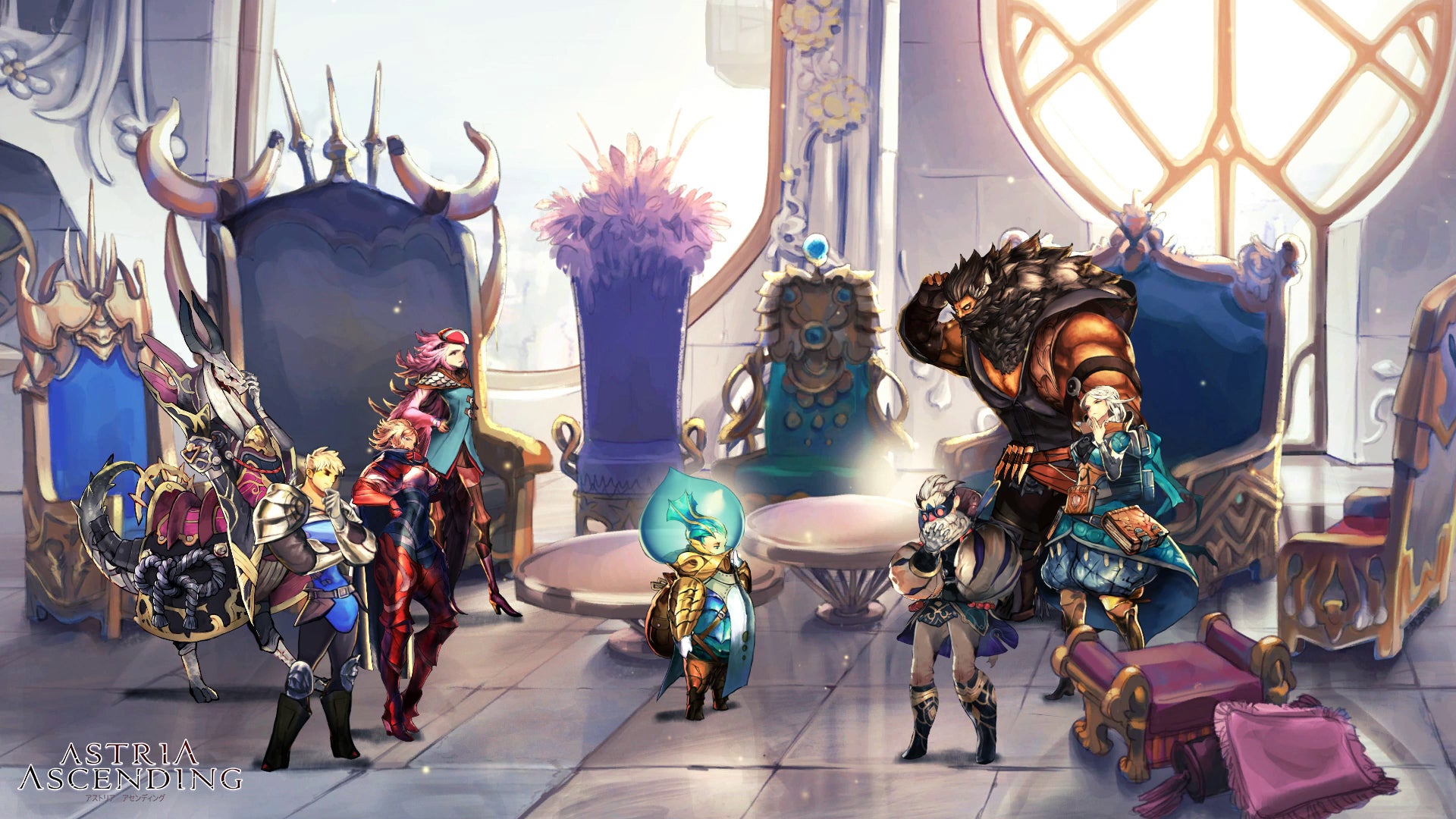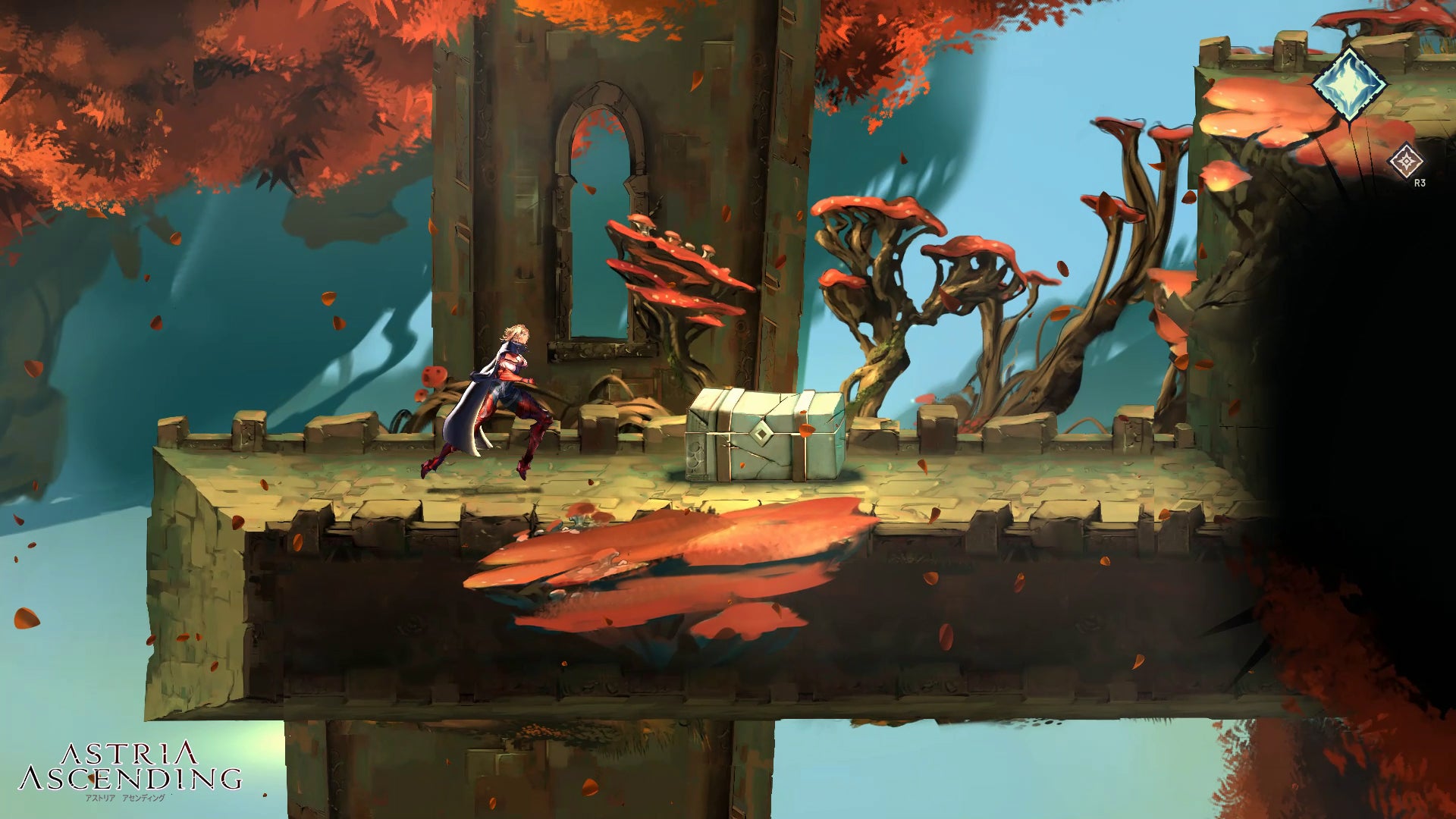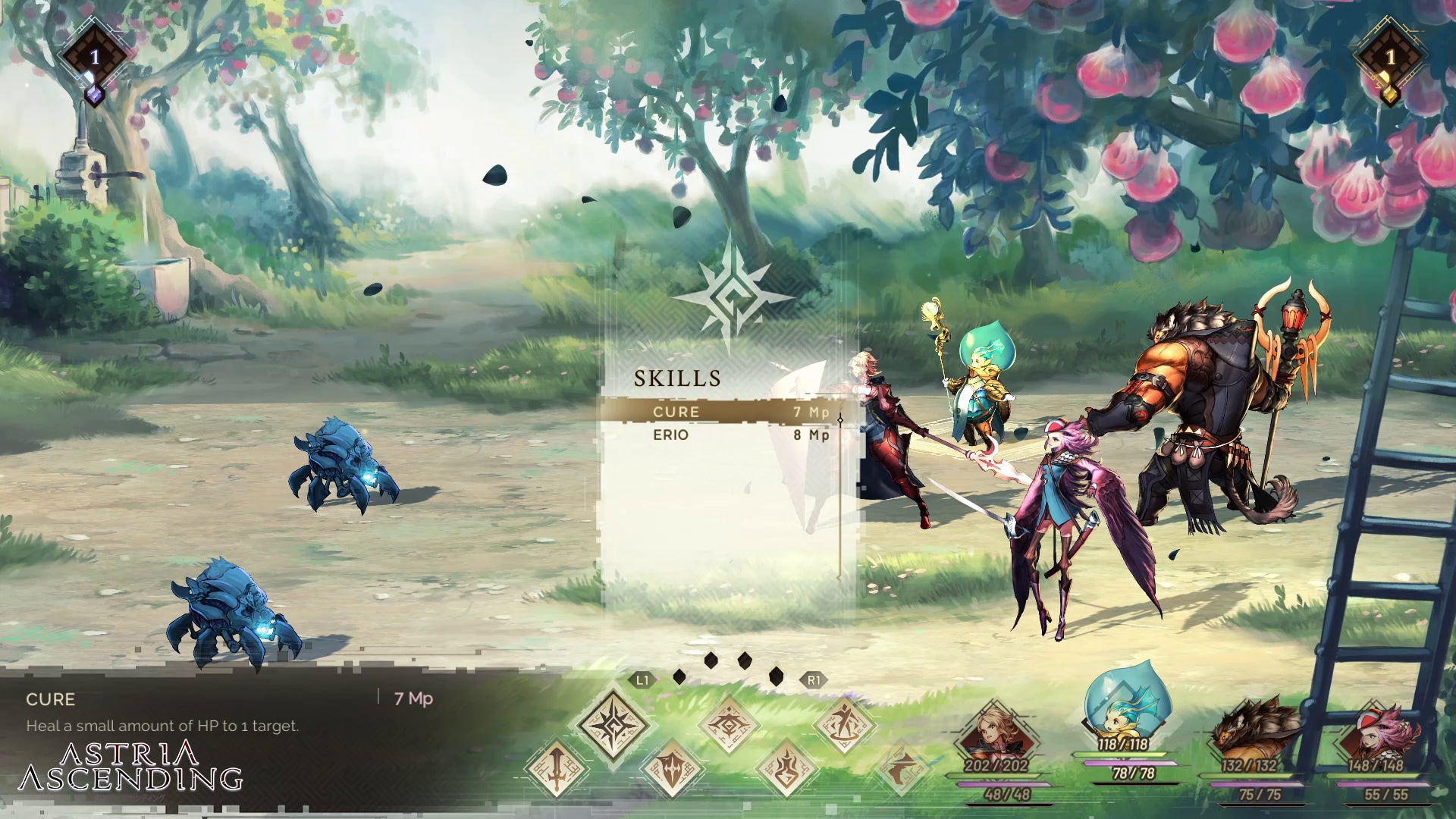On the surface, Astria Ascending intrigued me with its wonderful hand drawn artstyle. In an age where more and more games, especially Japanese RPGs are going full 3D, having a different look can help a game stand out amongst a crowd. The 2D art invokes familiarity with Vanillaware titles like Odin Sphere or Dragon’s Crown. The colors are crisp and the backgrounds look sharp. Unfortunately, a captivating artstyle can’t save what a sloggy experience the game is.
What is Going on in Orcanon?
Astria Ascending takes place in Orcanon, where a group of eight chosen individuals called Demi-Gods protect Harmony, which is some sort of peace agreement between the different races in the game. In order to keep the pact of peace, Orcanon’s races eat Harmelons, which suppress certain abilities. The Demi-Gods gain immense power and abilities to fight off antagonistic beings called the Noise, but in exchange are only given three more years to live before another group comes along and does the same thing. There are some interesting concepts and themes like rebellion and free will, but the story ends up being incredibly boring. The game throws so many proper nouns at players, like “Harmony” and “Chaos” and “Dissonance”; it’s all too much at once and implemented like they’re from some generic JRPG 101 textbook. Racism is also a big theme in the game, but it doesn’t handle it very well. One of the Demi-Gods, Eko, is a member of a race of fish-like people called Peyskas. Early on in the game, an unfortunate event befalls the Peyskas and Eko is rightfully upset about it. However, even the main cast is weirdly racist towards each other. Some of them even mock Eko, spouting ideas like Peyskas are stupid or they’re untrustworthy. And I’m supposed to believe that these eight chosen Demi-Gods are supposed to save the world? There’s no real sense of camaraderie between them, and they’re all introduced at the beginning of the game in a sort of rapid fire, speed-dating style. There are loads of side quests and backstories that help expand on the world building and members of the main cast’s history up to becoming Demi-Gods, which is appreciated. But it doesn’t change the fact that the characters are so unlikable. What makes things even worse is that the English voice acting is some of the most painfully average that I’ve heard in a very long time. All of the lines in the poorly dry script are delivered flatly. Cutscenes are so awkward because it feels like none of the characters are actually “speaking” to each other—the conversations don’t flow well. The Japanese voice track, on the other hand, sounds pretty decent in comparison. English dubbing has gotten substantially better over the past decade, and it was incredibly jarring to hear how bad it was here. It’s a shame because the English voice cast for Astria Ascending has a lot of new talent and names I don’t recognize. They aren’t the typical swath of voice actors you’d hear in most JRPGs these days. However, you can definitely notice the amateurish quality of the voice acting and it seems like this game is probably many of the actors’ first notable gig.
Taking a Page From the Classics
Astria Ascending draws a lot of inspiration from classic JRPGs, and that’s reflected most in its battle system. It’s a simple turn-based affair. The twist here is that if you hit an enemy’s elemental weakness, you can gain Focus Points, or FP. It works somewhat similarly to Bravely Default’s BP mechanic. Except in that game, BP is used to allow a unit to perform consecutive actions in a given turn. Here, spending FP allows you to power up a single move’s effectiveness, like increasing the damage of a spell. You can also skip a party member’s turn to add to the pool of FP available, but with the caveat that the one unit of FP will disappear when that member’s next turn comes around. It’s a nice feature that adds some nuance to the battle system, but it doesn’t necessarily make the fights flow all that much smoother as opposed to something like Persona’s One More mechanic. The battle system also has a huge load of status effects. There are positive ones like Regen (HP recovery every turn), Courage (attack strength increase), and Spirit (magic strength increase). There are also negative ones like poison, stun, and confusion. Between different elements and weaknesses, as well as status effects and debuffs, keeping track of everything can get pretty overwhelming. Winning battles also earns Skill Points, or SP, that you can spend to have your party members learn new skills and abilities or increase stats. The Ascension Trees, with the nodes arranged like stars in a constellation, are quite expansive. Each of your party members has a Base Job, like Soldier, or Scholar. You can then apply Main Jobs to them like Guardian or Black Mage for even more customizability. Each member gets Sub Jobs as well, in which they can’t learn any abilities from the chosen class, but can only earn the stat boosts it comes with. Whether or not players find these systems “fun” entirely depends on the type of player they are. They appeal to the sort of meticulous stat min-maxer that enjoys optimizing party members. Because of the incredibly simple nature of the game’s turn-based battle, many of these mechanics add a lot of complexity rather than depth. Throughout the game, you’ll come across different elemental rings that grant powers to solve dungeon puzzles. For example, the Fire Ring can burn obstacles and the Air Ring can push objects. The puzzles aren’t very difficult, but just challenging enough that you feel some satisfaction after solving them. It’s a bit refreshing to see puzzles in a JRPG after many bigger ones have essentially abandoned them in favor of corridors and large open spaces with endless battle encounters. One aspect that I did enjoy about Astria Ascending was its soundtrack, composed by Hitoshi Sakamoto, who has also worked on both Final Fantasy XII and Final Fantasy Tactics. The main hub, Harmonia Town, particularly has a very soothing angelic theme playing in the background. The battle theme also will have you pumped up to defeat the Noise too. With so many other incredible JRPGs released in 2021, it’s hard to recommend Astria Ascending. It does have a very pretty artstyle, which is what will draw most players initially. The battle system and customization options can be enjoyable to tinker around with, but the lackluster story and unpleasant cast of characters really bog down the whole experience. Disclaimer: Tested on PC, with a copy of the game provided by the publisher. Also available on Xbox One, Series X|S, PS4, PS5, and PC. Also part of Xbox Game Pass from release.



